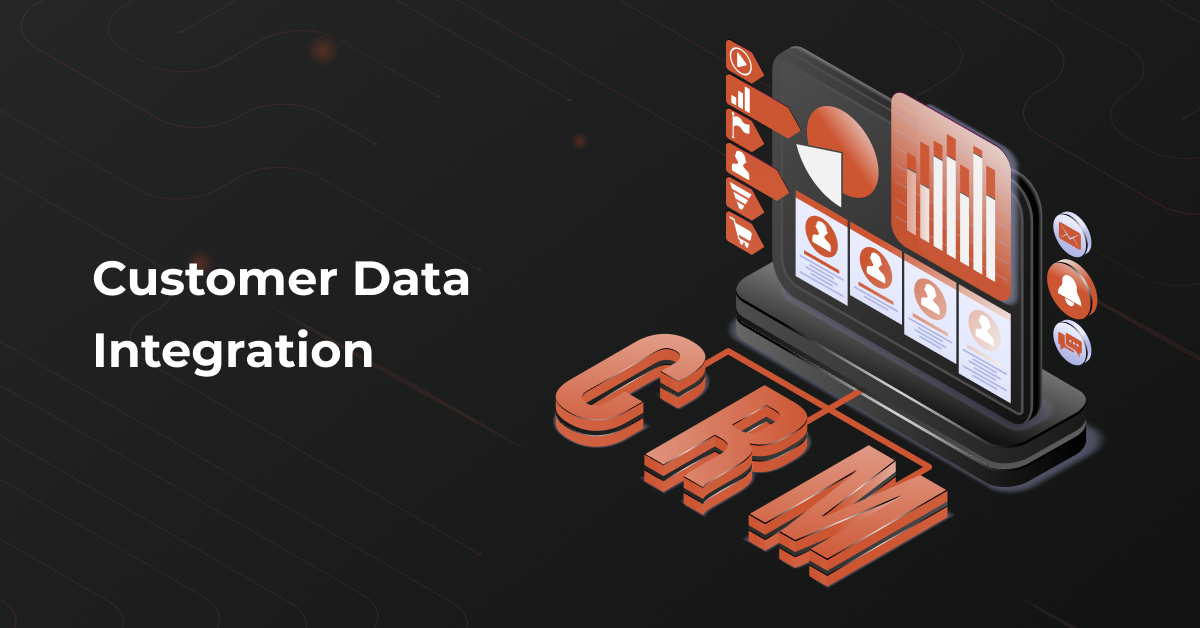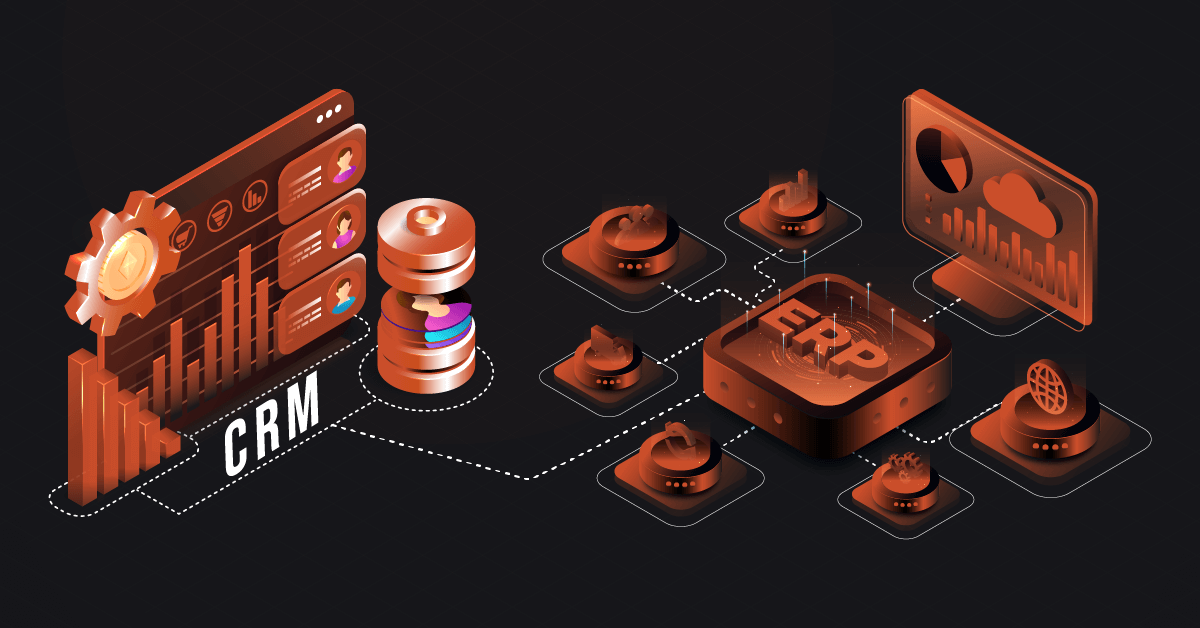Customer Data Integration (CDI) is the process of consolidating and managing customer data from multiple data sources at a single location to provide a complete 360-degree view of the customer.
The information usually is collected from various touch points including sales, marketing, customer service, etc., and aggregated into a centralized system such as a customer relationship management (CRM) system. To achieve this, connections between data sources and CRM can be made through pre-built connectors, custom code (manual data integration), or an iPaaS solution (integration platform as a service) like DCKAP Integrator.
8 Key Customer Data Integration Best Practices
The CDI process may vary across organizations, yet some steps remain common. Initially, it involves identifying objectives and data sources and understanding the required data, its origins, and its structure.
Subsequently, this data is integrated into the CDP, data sets are transformed to appropriate schemas, and loaded as unified customer profiles across the tech stack.
1. Establish a Clear Strategy
Having a well-defined CDI strategy that aligns with your business goals is the first and foremost step. Once you have the objectives, expected outcomes, and benefits of the CDI project outlined, you can steer it in the right direction.
2. Focus on Data Management
You need to have appropriate data quality controls in place to preserve data integrity. Consider adopting practices like data cleansing, validation, and enrichment. Make sure to regularly clean and monitor your integrated customer data to eliminate duplicates, rectify inconsistencies, and ensure accuracy.
3. Standardize Your Data
Ensure standardization of data across different formats, values, and attributes. For instance, you can adopt consistent naming conventions or data structures that simplify integration and improve compatibility. Good standardization practices enable precise data mapping and minimize complexities in the integration process.
4. Identity Resolution Techniques
You would need to apply identity resolution methods to accurately match and merge customer records from different sources. Use algorithms to identify and link duplicate or related customer data, reducing redundancies and ensuring a unified customer view.
5. Set Up Data Synchronization Processes
Data synchronization processes help keep customer data consistent and current across various systems and applications. You may implement real-time or near-real-time updates to uphold data integrity.
6. Conduct Data Profiling
You need to understand the quality, structure, and characteristics of customer data, and this is where data profiling and analysis can prove useful. It helps you in identifying inconsistencies, patterns, and trends, enabling you to proactively resolve data issues.
7. Conduct Regular Data Audits
Carry out routine data audits to assess the quality, accuracy, and completeness of integrated customer data. Identify gaps and inconsistencies, and use these insights to refine CDI processes.
8. Establish KPIs (Key Performance Indicators)
Track metrics related to data quality, accuracy, and customer satisfaction. You need to continually assess the CDI’s impact on business outcomes and adjust your strategies accordingly.
Read more: CRM Data Integration: How It Works With Other Systems
Customer Data Integration Methods
CDI provides unified, validated, and complete information on each customer which can be easily and quickly accessed by different departments across the organization. These insights can help you offer personalized experiences, improve customer service, and much more.
Typically, the following four data integration methods are used in CDI:
- Data consolidation: In this method, data replicated from multiple sources is then integrated into a centralized, single platform or data store.
- Data propagation: This method relies on applications that replicate and push data from one location to the other.
- Data warehousing: In this method, data warehouses store data consolidated by various systems. What differentiates data warehousing is that the data is used for accessing and analyzing instead of transaction processing.
- Data federation: This method enables businesses to consolidate data from multiple systems or sources into a virtual database for the purpose of analysis or business intelligence.
Customer Data Integration Process: A Brief Overview
Here is a quick look at the core components of the CDI process.
Determining Goals
The first of the CDI process is to identify your goals and objectives clearly. Determine what you want to achieve out of this project. For example, you may want to enhance customer experience, improve sales performance, utilize customer behavior insights, or boost your marketing efforts.
Choosing Data Sources
When it comes to identifying data sources, consider which sources can prove valuable in creating a holistic and reliable view of your customer—email addresses, financial data, contact information, physical addresses, phone numbers, customer ID numbers, or other relevant data markers. For instance, you may want to look into social media platforms, websites, CRM platforms, marketing automation tools, or customer support databases.
Data Mapping and Schema Designing
The key to success here is to create a data model that can incorporate different user data types, their attributes, and their relationships. In this step, you need to get an understanding of the structure and format of customer data aggregated from different sources. Then, define a strategy for data mapping, aligning, and transforming data from different systems into a consistent format.
Data Extraction and Data Transformation
Once you define the data mapping strategy, data from each source is retrieved with that strategy. The data is then transformed to ensure consistency, accuracy, and compatibility with the databases or CDI platforms. The steps may include data cleansing, standardization, deduplication, and normalization procedure
Data Loading and Integration
The next step is to import transformed customer data into a chosen database, CDI system, or CDP. You can use APIs (application programming interfaces), data integration tools, or custom data integration workflows for transferring and consolidating data into a centralized repository. Here, identity resolution methods to identify and connect each customer record from different sources can also be applied. Also learn about Best Data integration Consultants
Data Validation
Carry out checks for data validation to ensure the accuracy of the integrated customer data. This also requires cross-checking data against business rules, ensuring data completeness, and resolving any errors or inconsistencies. You can utilize quality assurance testing to ensure that the integrated customer data adheres to the required standards.
Accessing and Maintaining Real-Time Data
The next step involves allowing access to the integrated customer data to various stakeholders. You can have systems in place that help maintain the accuracy of the customer and ensure it is up-to-date. Focus on data enrichment, synchronization, and data governance to preserve the integrity of the customer data.
Continuous Optimization
CDI isn’t a one-time task but an ongoing activity that needs improvement and optimization. You need to track the performance of your CDI systems, collect user feedback, and identify areas for improvement. Revisit data integration strategies, data quality measures, and data governance protocols to keep pace with the changing business environment and data needs.
Recommended read: CRM-ERP Integration Explained: Why and How
6 Benefits of Customer Data Integration
CDI benefits may vary across teams and industries but here are a few important ones.
A 360-Degree Customer View
CDI provides a unified, consistent view of your customer—this gives an in-depth understanding of the customer behavior, their preferences, and even customer interactions across different touch points. These insights can help teams deliver targeted, personalized experiences.
Enhanced Customer Experience
Access to up-to-date customer data gives companies the power to enhance customer experiences. It involves targeted marketing campaigns, personalized communication, and appropriate recommendations based on customer preferences, behavior, or purchase history. This may result in better customer satisfaction and loyalty.
Improved Marketing Impact
With CDI, you can better segment your customers for improved targeting. Moreover, deep customer insights help you refine your marketing strategies, resulting in better campaign ROI, engagement, and efficiency.
Optimized Sales Processes
CDI enables your sales and marketing teams to access up-to-date customer data. With these insights, they are better equipped to understand customer needs, make the right recommendations, and improve upselling or cross-selling efforts. It can ultimately streamline your sales and business processes, improve conversions, and increase revenue.
Deep Business Insights
By integrating and analyzing customer data from various sources, you get crucial insights into market trends, business performance, and customer behavior. These can be utilized for profitable decision-making to optimize operations and accelerate business growth.
Data Compliance
Data governance protocols utilized in CDI enable organizations to uphold data privacy, adhere to data protection regulations, and implement data security policies. This helps protect customer data and also builds trust among customers for managing their data.
Challenges in Customer Data Integration
Unifying data from disparate sources isn’t always easy. Here are some challenges that businesses can face during CDI.
Handling Large Volumes of Data
Businesses face the main challenge of managing and deriving value from large volumes of customer data to improve decision-making. With the increase in the number of devices and platforms, along with the decrease in storage costs, customer data management has become more complicated.
Not to forget piling historical data. Therefore, ensure that you have efficient and scalable data management solutions that grow with your business.
Lack of a Robust Integration Approach
The primary roadblock in implementing a successful CDI strategy is aggregating data from diverse sources or channels, especially given varied data formats. Conceiving and implementing a robust integration strategy that identifies the right integration method and platform is critical.
You should look for options that can not only simplify the CDI process but also offer scalability and flexibility.
Protecting Sensitive Customer Information
This is a major challenge because any data breaches and the subsequent recovery of lost data may incur substantial costs. Moreover, the loss of critical data can be damaging for businesses, leading to loss of customer trust, reduced sales, and potential damage to the company’s reputation.
Therefore, you need to consider implementing robust data security measures, and implementing data integration platforms can facilitate this process.
Are You Ready? Start Customer Data Integration with DCKAP Integrator
It is a proven strategy—integrating and centralizing customer data from applications and systems into a central location significantly enhances customer experience and decision-making. Market-leading iPaaS platform for distributors, DCKAP Integrator enables seamless and rapid customer data integration from diverse data sources, presenting as a perfect CDI tool. With pre-built connectors and templates, powerful automation, and real-time data insights, you can simplify your CDI process without unnecessary delays.
Final Words
In summary, customer data integration is crucial for businesses of all sizes. It centralizes data from various sources, enhancing customer experiences and improving informed decision-making. iPaaS platforms like DCKAP Integrator expedite CDI, transforming your data into a strategic asset to leverage competitive advantage.
To know more about how DCKAP Integrator can support your CDI journey, get in touch with us today or check out our pricing plans.
Contents




